Methods for connecting a video projector to a laptop
Connecting the projector to a laptop is carried out by simple manipulations, but, unfortunately, along this path there are often difficulties. When the devices refuse to mate automatically, this means that the standard settings of the system have been brought down, or these devices simply “do not understand” each other. How to connect a projector to a laptop in this case? The connection is configured manually: for this, the operating system provides for certain key sets. In the absence of such, the parameter setting is carried out by forcing configuration changes.
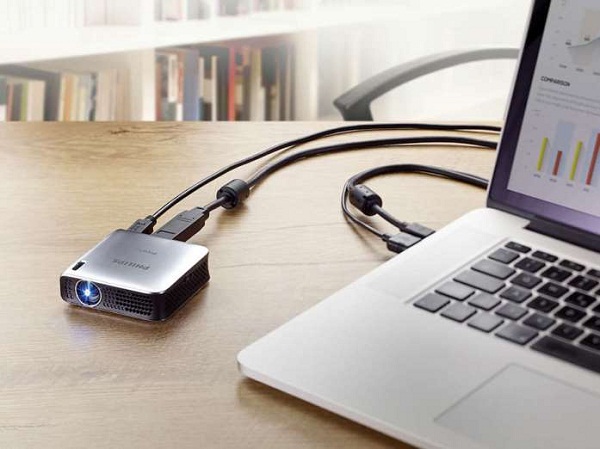
Content
Wired connection
A multimedia projector, regardless of model, connects to a computer or laptop via VGA or HDMI cable. For high quality HDMI content would be preferable.
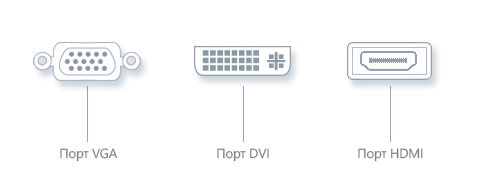
Elementary connection algorithm:
- disconnect both devices from the network before turning on the projector;
- Insert the plug into the appropriate connector;
- Turn on the projector, then the computer.
In cases where the desired connector is not available, you can use special adapter. This can happen when a video card has only a DVI connector, and a VGA or HDMI projector. Using an adapter slightly reduces the quality of the content. The projector turns on first, otherwise the computer does not see it.
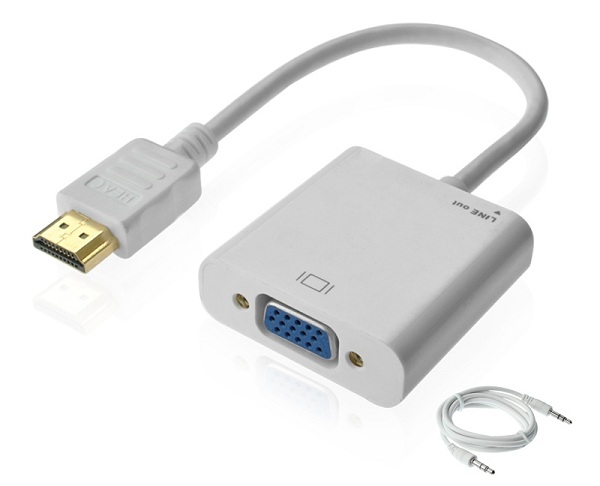
Special adapter
Wireless connection
You can also synchronize devices via Wi-Fi protocol, today this method is gaining popularity. To activate you need install drivers, but in the case of Windows 7, it is usually quite regular.
If you lose the disc, the application can be downloaded on the Internet from the site of the projector's brand.
Before you connect the projector to a laptop, you need to install Wi-Fi antennas in the USB-connectors of the projector and PC, they look like a small USB flash drive. A green indicator light indicates that the connection was successful.
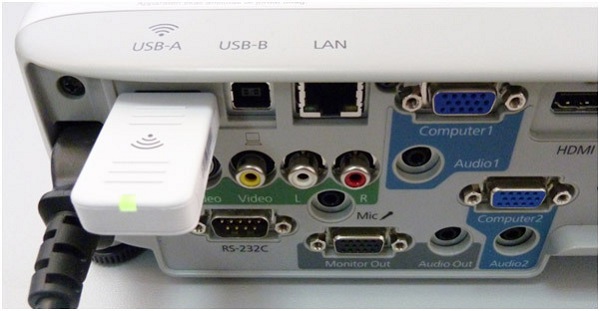
It is worth noting that not all projectors that support Wi-Fi, will project the video. Some models can be connected only to control the equipment, this nuance needs to be clarified with the purchase. Wired connection is more reliable and practical: HDMI plug, for example, is designed to transmit video of excellent quality without interference.
We display content in the right mode
Theoretically, after connecting the cable to the appropriate connector, the picture should appear automatically. In some cases, when the settings are incorrect, the user must make the necessary changes to display the content. It is known that each version of the operating system has its own characteristics, because there is no single procedure.
- Hotkeys. To project a menu from a laptop to an external projector screen, you need to combine the Fn key and one of a series of F1-F12 (a button with a picture of a laptop and an external screen) with one press. This method does not work if the function buttons are not active.
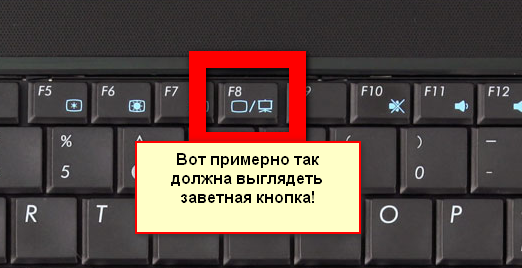
Button toggle between laptop screen and projector
- Windows Xp. Setting up the projector on a popular XP version is as easy as managing this outdated system. To adjust the parameters, enter the desktop menu using the right mouse button (click on any freea place). Open the "Properties" item, then in the "Display" menu, select "Settings / Settings." Next, select the display of the computer (laptop) or the connection of the second external screen, noting the item “Extend the desktop onto this screen” (Extend my Windows desktop this monitor). By the way, here you can verify whether the permission is set correctly.
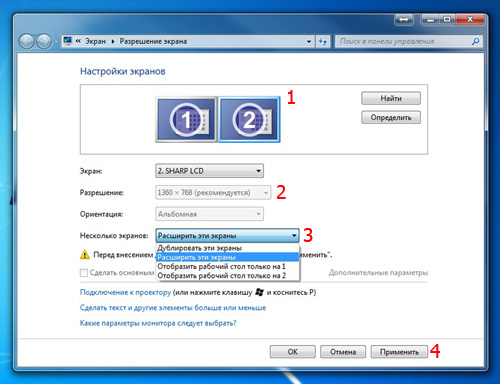
- Windows 7 /Vista In this system, you need to go to the section "Screen Resolution", for this we right-click on the desktop. Here from the list “Multiple screens” choose “Extend these screens”. The second way is through the search line where you need to enter "Connect to the projector", then a link to the standard application will appear. The user will be presented with several modes of content output.
- Windows 8. For the eighth version of Windows, there is a simple method of projecting an image: go to Start, open the Control Panel tab, and select Screen on the Design and Personalization section, and then Screen Resolution. Next will be presented the choice of PC monitor or external screen.
Then, the user gets access to four picture display modes connected projector.
- Duplication (repetition) - when video from a computer or laptop is duplicated to an external screen.
- Only the computer - the content is played on the laptop display, and the external screen at this time is not involved.
- Expansion - the desktop is divided into two parts, its left side is displayed on the PC monitor, and the right side through the projector.
- Only projector - information will be projected only on the big screen.
Useful chips for Power Point
Office program Power Point "sharpened" for presentations, it is often used because it is simple and convenient. There are some peculiarities of work, for example, you can display slides on a large screen, and the text of a report or lecture on a PC display.
The settings do not take much time: after synchronizing the projector with the PC, go to the program and on the top panel look for “Slideshow” - “Show presentation”. We put a tick in front of the "projection equipment". Here you can find the “Speaker Mode”, if you activate it, various auxiliary tools for conducting lectures will be displayed on the screen - additional buttons or notes.
Manual image debugging
Sometimes pictures or letters are blurred or “floated” - this happens when the wrong monitor resolution settings are set on the PC.To maximize quality, install a resolution on your computer that matches the characteristics of the projector. At the same time, the projector settings do not change.
How to change the settings on your computer / laptop (for the platform Windows 7 /Vista):
- To enter the computer settings, you need to open the menu with the right mouse button (click on the desktop);
- select the item "Screen Resolution" and set the correct value (like the projector);
- save the settings by clicking the "OK" button.
Options Windows 10 slightly different, here the item "Resolution" is in the parameters section of the screen. Click "Start" and find the "System" tab, in the right part of the window, scroll to the bottom of the page and open "Advanced display settings". Then everything is simple: select the desired value and save the settings.
This task, how to connect the projector to a computer, is completed. After connecting, the user is left to choose a convenient output mode for conducting a presentation or watching a video at home.

/rating_off.png)











